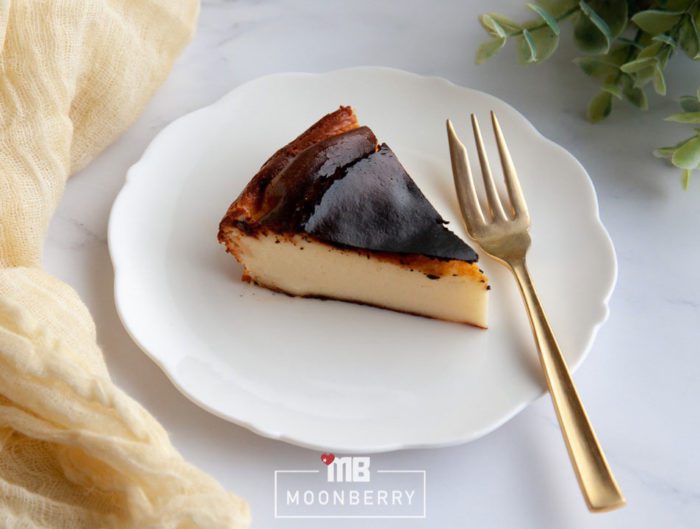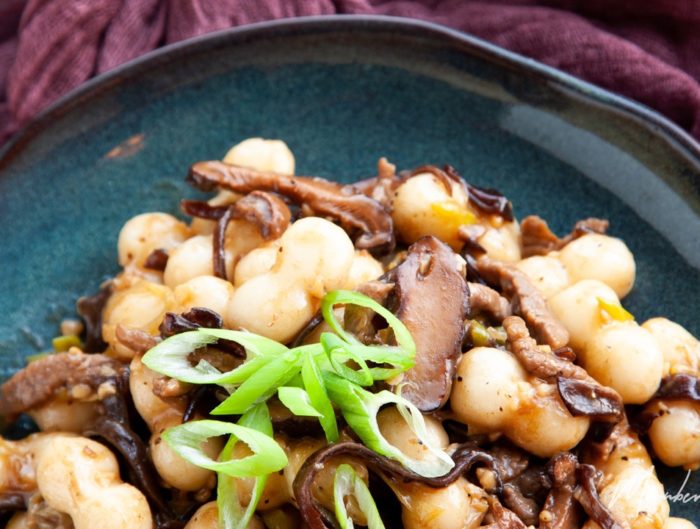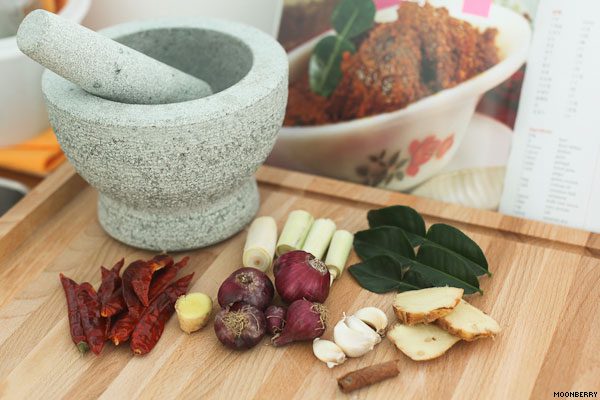
I *heart* Peranakan cuisine. Peranakan culture is so unique, and interesting to me personally, because it’s a fusion of Chinese and Malay cultures. Food that’s categorically Peranakan, also known as Nonya food, is very robust in flavours because pretty much all of them are built from a base of “rempah” — spices that have been pounded together. Traditionally these spices are pounded in a mortar and pestle. Peranakan desserts are also very delicious, but that’s another level altogether and I don’t think I am ready to tackle making any quite yet. I will stick to cooking savory dishes for now and see how it goes.
Peranakan or Nonya cuisine combines Chinese, Malay and other influences into a unique blend. Peranakans are descendants of early Chinese migrants who settled in Penang, Malacca, Indonesia and Singapore, inter-marrying with local Malays. The old Malay word nonya (also spelled nyonya), a term of respect and affection for women of prominent social standing (part “madame” and part “auntie”), has come to refer to the cuisine of the Perakanans.
Nonya cooking is the result of blending Chinese ingredients and wok cooking techniques with spices used by the Malay/Indonesian community. The food is tangy, aromatic, spicy and herbal. Key ingredients include coconut milk, galangal (a subtle, mustard-scented rhizome similar to ginger), candlenuts as both a flavoring and thickening agent, laksa leaf, pandan leaves (Pandanus amaryllifolius), belachan, tamarind juice, lemongrass, torch ginger bud, jicama, fragrant kaffir lime leaf, rice or egg noodles and cincaluk – a powerfully flavored, sour and salty shrimp-based condiment that is typically mixed with lime juice, chillies and shallots and eaten with rice, fried fish and other side dishes.[Source: wikipedia]
Peranakan Beef Rendang
Ingredients
Serves 4
450 g Beef (I used beef stew meat, but you can use any cut you like; personally I prefer brisket but it was sold out at the supermarket during the time I was making this)
10 Dried Chillies
10 cloves Shallots
3 cloves Garlic
3 slices Galangal
2 stalks Lemongrass (stem part only)
1/2 inch Ginger
2 cups Coconut Milk
3 Tbs Cooking Oil
1 stick Cinnamon
3 pieces Kaffir Lime Leaves
1 Tbs Curry Powder
2 Tbs Tamarind Juice
1 tsp Salt
Method
1. Cut the beef into pieces. (I used a meat tenderizer gadget and pierced holes into the meat to tenderize as well as for the flavors to seep in more during the cooking process.)
2. Pound dried chillies, shallots, garlic, galangal, lemongrass and ginger together. Use mortar and pestle, or you can blitz these in a food processor. (I cheated by blitzing the lemon grass first so that they become fine shreds, before pounding the hell out of them with the other ingredients mentioned above in the mortar.) You will yield about a cup of spice paste by the time you’re done pounding/blitzing.
3. Heat up oil in wok and fry the cinnamon, pounded ingredient and kaffir lime leaves until fragrant.
4. Add in beef, curry powder, coconut milk, salt and tamarind juice. Cook until the gravy thickens.
5. Serve immediately. (Or leave in refrigerator for a day or two, the flavors will intensify and this dish tastes even better overnight imo.)
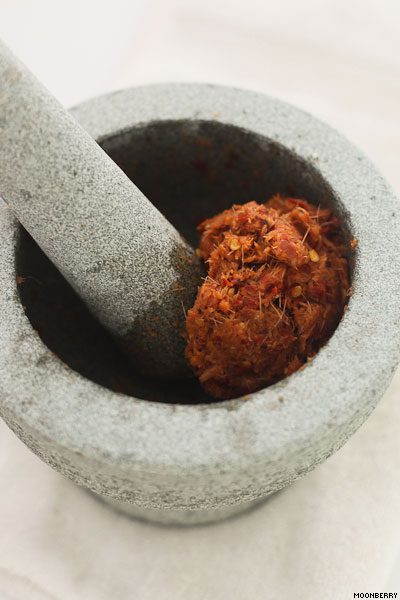
So there I was, using the stone mortar and pestle for the first time (I picked it up at the wet market for twenty-five bucks, probably overpriced but eh, it’s a novelty for me). First thing I did was stick some small rubber stoppers onto the base so that it doesn’t scratch my countertop or shelf during storage. And when I realized the “rempah” was gonna take some serious intensive pounding (a good twenty or so minutes), I put a hand towel underneath the mortar to help muffle the noise.
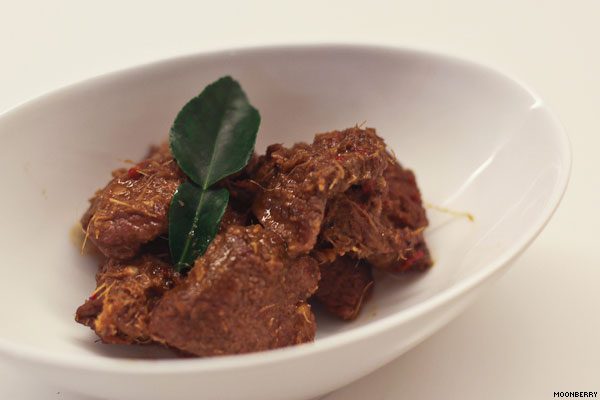
Here’s the final result, adorned with a kaffir lime leaf which I conveniently plucked from my herb garden out in the balcony. ^^ This beef rendang definitely has a kick to it, so if you like spicy this dish is for you! I wish I had used beef brisket though, because the chewy tendons would have been a nice texture and an enjoyable factor to make the spices dance in the mouth more.


